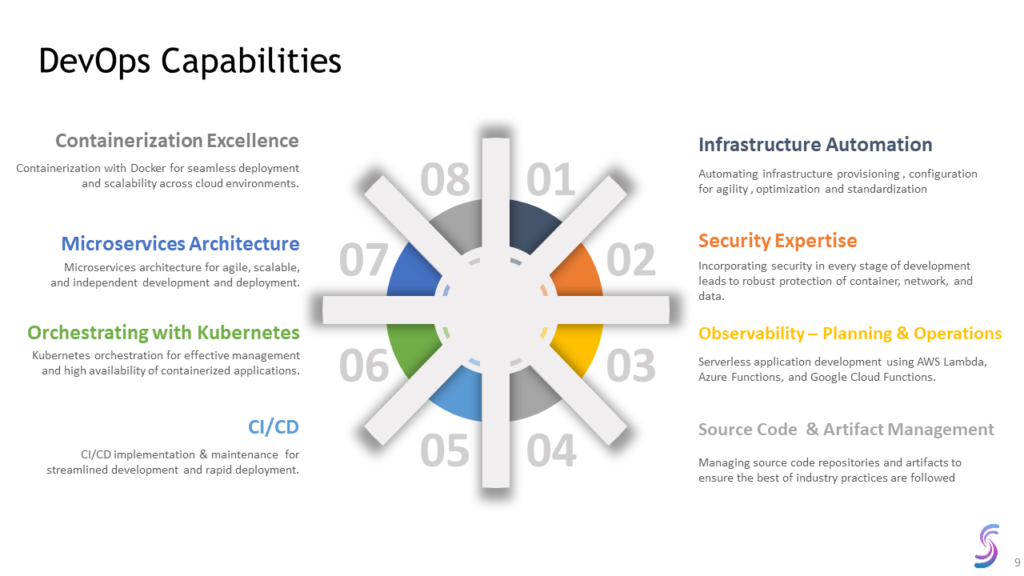
Containerization Excellence
Journey to containerization should have a well-defined approach that is supported by accelerators and skills. Below are the stages in containerization,
- Assess – Examine the application architecture, business practices, and development workflows and other aspects
- Plan – toolset, accelerators, standardization
- Containerize – Lift & Shift / Transform
Microservices
Microservices development should involve,
1. Architecture definition
2. Realizing the entire application as independently scalable units / services
3. Adopting 12 factor principles
4. Leveraging cloud & managed services
Orchestrating with Kubernetes
Kubernetes offers the best in terms of autoscaling, flexibility, self-healing properties. Kubernetes has a robust and rich open-source ecosystem, Kubernetes adoption should consider the aspects,
1. Cluster Planning & Deployment
2. Application Onboarding
3. Security
3. Observability
4. Lifecycle Management & upgrades
CI / CD
Any CI / CD implementation should address,
1. CI, CD, source code & Build toolset, setup, governance
2. Integration with Issue / requirement tracking and release management toolset
3. Artifact repository
4. Observability & monitoring
5. Containerization & orchestration
6. Security
7. Automation – Infrastructure, testing, deployment, etc.
Infrastructure Automation – should address,
1. Toolset identification
2. Controls and policies
3. Industry best practices adoption
Security Expertise
Refer our article on DevSecOps for a detailed view of this
Observability
Tools and governance on handling the below telemetry types,
• Logs
• Metrics
• Traces
Source Code & Artifact Management
Tools, process & governance on,
1. Source code repository
2. Artifact repository